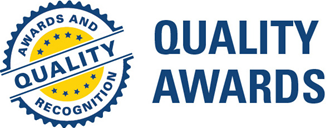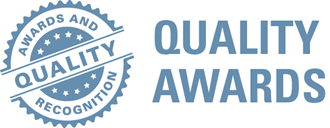Essential theoretical components are taught early in the program so clinical applications can be expanded upon throughout the curriculum. All classroom and clinical experiences are offered Monday thru Friday during the hours of 0645 and 1430.
Curriculum Plan
| Courses |
Term I
9 weeks |
Term II
9 weeks |
Term III
15 weeks |
Term IV
15 weeks |
Total Hours |
| Surgical Technology |
60 hours |
45 hours |
60 hours |
60 hours |
225 |
| Clinical/Laboratory |
60 hours |
60 hours |
300 hours |
300 hours |
720 |
| Anatomy & Physiology |
30 hours |
30 hours |
|
|
60 |
| Medical Terminology |
30 hours |
|
|
|
30 |
| Microbiology |
|
30 hours |
|
|
30 |
| Pharmacology |
|
30 hours |
|
|
30 |
| Total Term |
180 hours |
195 hours |
360 hours |
360 hours |
1095 |
*Credits for grading purposes; does not constitute “college credit” unless accepted for transfer by an authorized degree-granting institution.
- 1 credit hour = 15 hours
- 1 clinical hour = 60 hours
Clinical Case Requirements
The number of cases required for graduation from the St. Luke's Hospital Surgical Technology Program is 120 cases.
- General Surgery Cases
Students must complete a minimum of 30 cases in general surgery; 20 which must be performed in the First Scrub Role. The remaining 10 cases may be performed in either the First or Second Scrub Role.
*See below for description of Roles.
- Specialty Cases
Students must complete a minimum of 90 cases in various surgical specialties, excluding general surgery.
- A minimum of 60 cases must be performed in the First Scrub Role and distributed amongst a minimum of four surgical specialties.
- A minimum of 10 cases in the First Scrub Role must be completed in each of the required minimum of four surgical specialties (40 cases total required).
- The additional 20 cases in the First Scrub Role may be distributed amongst any one surgical specialty or multiple surgical specialties
- The remaining 30 surgical specialty cases may be performed in any surgical specialty either in the First or Second Scrub Role.
- Optional Surgical Specialties
- Diagnostic endoscopy cases and vaginal delivery cases are not mandatory. However, up to 10 diagnostic endoscopic cases and 5 vaginal delivery cases can be counted toward the maximum number of Second Scrub Role cases.
- Diagnostic endoscopy cases must be documented in the category of "Diagnostic Endoscopy", rather than by specialty.
- Vaginal delivery cases must be documented in the category of "Labor & Delivery'' rather than in the OB/GYN specialty.
- Case experience in the Second Scrub Role is not mandatory.
- Observation cases must be documented, but do not count towards the 120 required cases.
- Counting Cases
- Cases will be counted and documented according to surgical specialty, with the exception diagnostic endoscopic cases noted above.
- Examples of counting cases:
- Trauma patient requires a splenectomy and repair of a Lefort I fracture. Two cases can be counted and documented since the splenectomy is general surgery specialty and repair of LeFort I is oral-maxillofacial surgical specialty.
- Patient requires a breast biopsy followed by mastectomy. It is one pathology, breast cancer, and the specialty is general surgery. Therefore, it is counted and documented as one case.
- Endoscopic cases that convert to an open case, example: laparoscopic cholecystectomy converted to an open cholecystectomy is counted and documented as one case.
FIRST AND SECOND SCRUB ROLE AND OBSERVATION
FIRST SCRUB ROLE
The student surgical technologist shall perform the following duties during any given surgical procedure with proficiency. The following list is provided to identify the items that must be completed in order to document a case in the First Scrub Role. A student not meeting the five criteria below cannot count the case in the First Scrub Role and the case must be documented in the Second Scrub Role or Observation Role.
- Verify supplies and equipment needed for the surgical procedure.
- Set up the sterile field with instruments, supplies, equipment, medication(s) and Solutions needed for the procedure.
- Perform counts with the circulator prior to the procedure and before the incision is closed.
- Pass instruments and supplies to the sterile surgical team members during the procedure.
- Maintain sterile technique as measured by recognized breaks in technique and demonstrate knowledge of how to correct with appropriate technique.
SECOND SCRUB ROLE
The Second Scrub Role is defined as the student who is at the sterile field who has not met all criteria for the First Scrub Role, but actively participates in the surgical procedure by performing one or more of the following:
- Sponging
- Suctioning
- Cutting suture
- Holding retractors
- Manipulating endoscopic camera
OBSERVATION ROLE
The Observation Role is defined as the student who is in the operating room performing roles that do not meet the criteria for the First or Second Scrub Role. These observation cases are not to be included in the required case count, but must be documented.


 Quality Awards
Quality Awards